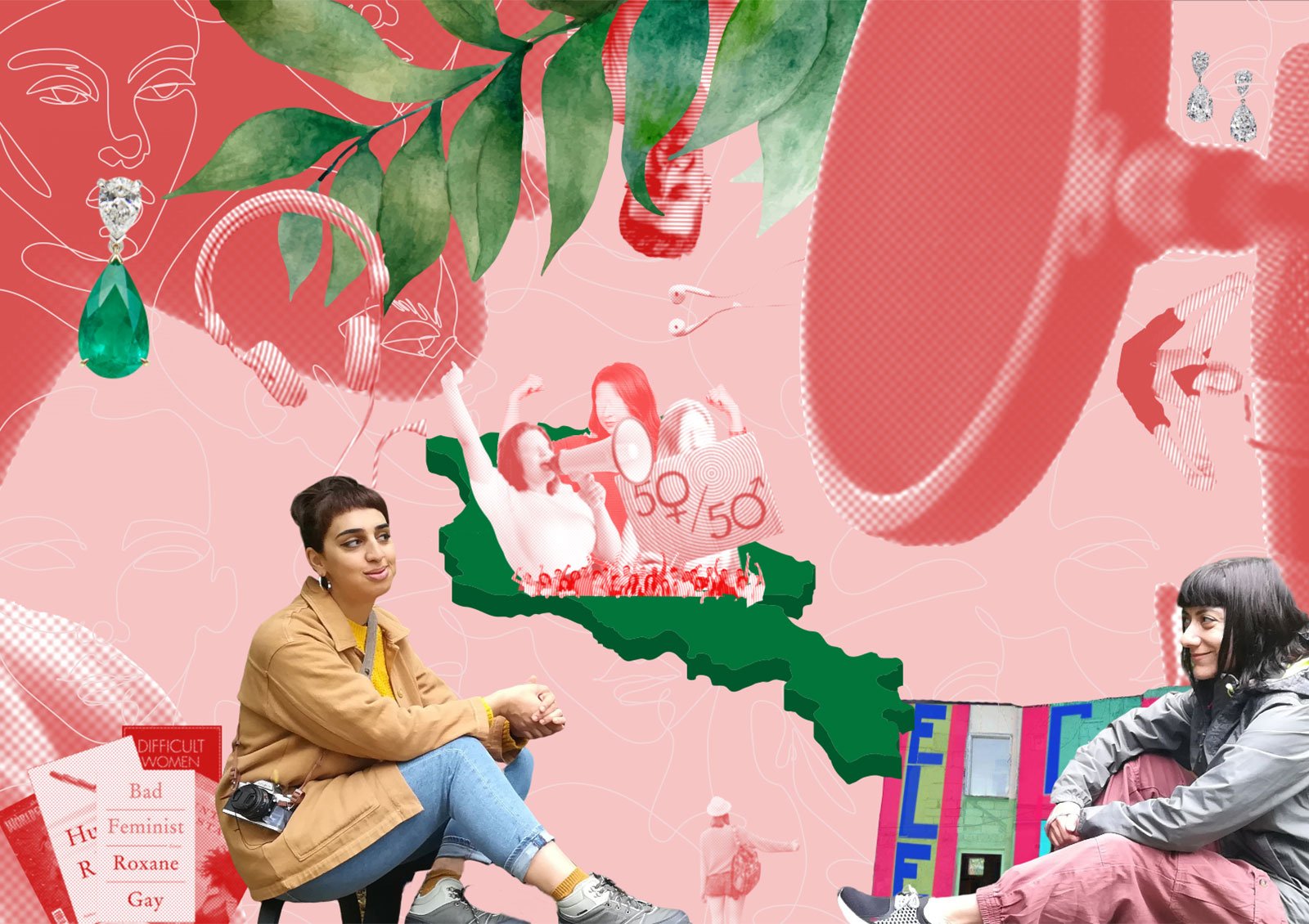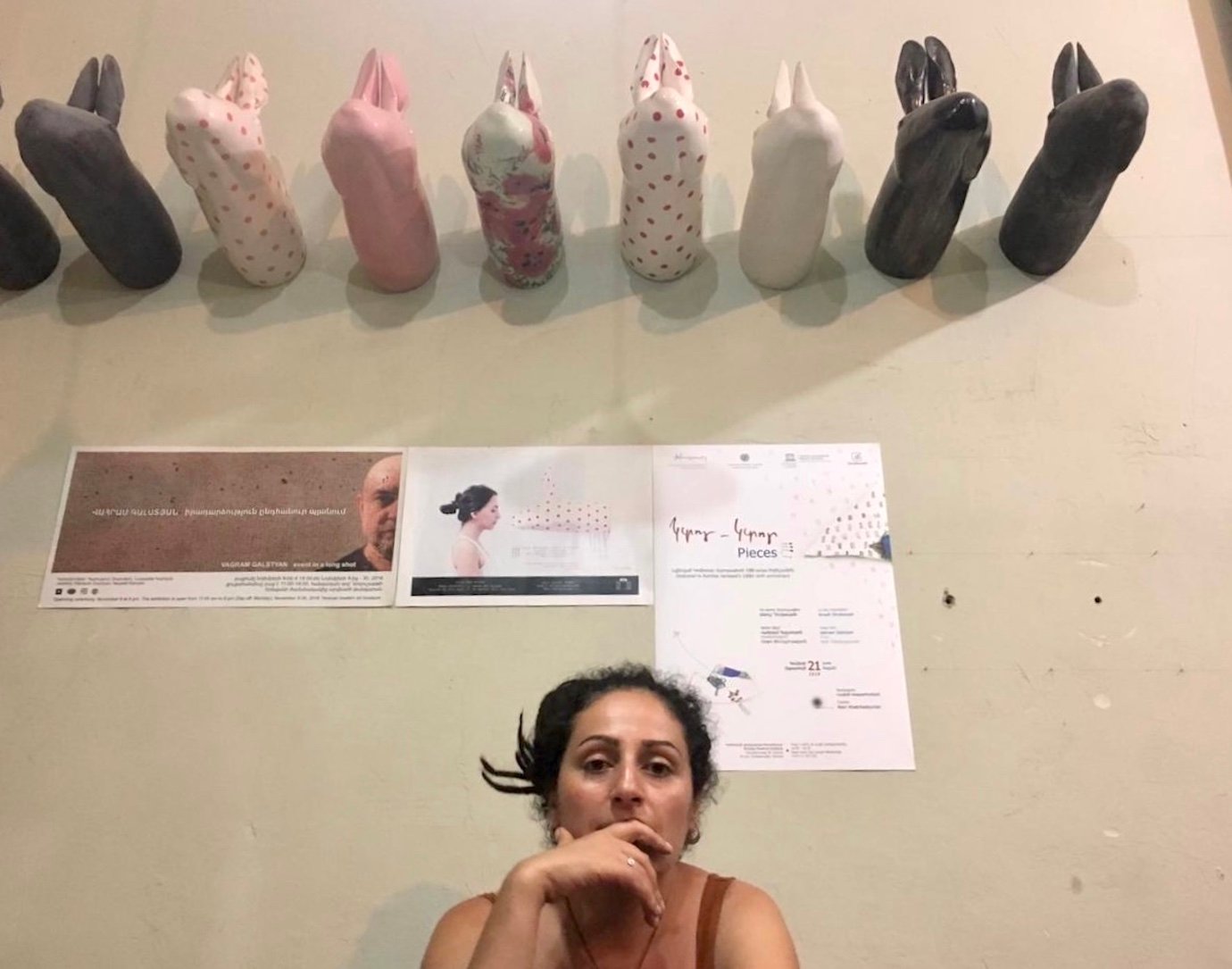Letter from Beirut: a year after devastation, Lebanon’s Armenian neighbourhood rises from the rubble
A year after the deadly port blast which left the Lebanese capital in disrepair, Beirut’s Armenian neighbourhood of Bourj Hammoud is still feeling the aftermath of both the explosion, and ongoing economic devastation. But the area's unique history has created a vibrant community with a strong sense of their own identity — helping residents to unite in the very hardest of times.
“Man, I really hate these dollar-stores,” blacksmith George Assarian tells me. He points at the garish sign that has become much more common in the Bourj Hammoud neighbourhood of eastern Beirut recently, with flimsy stands, half-collapsing under the weight of mop buckets and plastic children’s toys, strung along the pavement. “But nobody has the money for necklaces and rings anymore.”
Assarian’s concern is for the future of Bourj Hammoud’s community-orientated commercial life, which has long been a network of mutually-reliant local and independent craftsmen: smiths, cobblers, neon-sign makers, butchers, jewellers, and tailors, with businesses and expertise passed down generations.
The sheer need for survival has begun to transform some of these into bargain basements. Outwardly, this is one of the few signs that all is not well in Bourj Hammoud — a Beirut neighbourhood heavily populated by Lebanese Armenians.
Bourj Hammoud before the 2020 blast by Leslie Hakim-Dowek, as part of her photo series Where Do Swans Come From?
Alongside Mar Mikhael, Gemmayze, and Karantina, Bourj Hammoud is part of a network of districts that surround the port of Beirut. These neighbourhoods took the brunt of the explosion on 4 August 2021, when roughly 3000 tonnes of ammonium nitrate, seized from a vessel in 2014 and subsequently left in a dock-warehouse, caught fire and triggered one of the largest non-nuclear explosions in history. The blast killed at least 207 people, injured over 6,500, and caused damaged reported to be worth around $15 billion.
The explosion took place when Lebanon was already facing a dire financial crisis, chiefly triggered by attempts in 2016 to attract foreign currency for the payment of government debts. Unsustainable interest rates of up to 14 per cent soon led to inflation, and cash withdrawals were restricted to stop a run on banks.
This turmoil is not immediately evident on the streets of Bourj Hammoud. Unlike the other areas surrounding the port, Bourj is almost completely clear of the physical damage caused by the explosion. It is a source of pride for the inhabitants that this was achieved while the adjacent Lebanese districts are still marked — one year on — by destroyed buildings, smashed glass, broken traffic lights, flattened petrol stations, and miles of loose dangling electrical wire.
But this, potentially, reflects a difference of priorities. In the nearby areas of Mar Mikhael and Gemmayze, chic bars and restaurants have been newly rebuilt alongside the rubble instead. Already used to living among the ghoulish apparitions of abandoned, bullet-holed Lebanese Civil War-era buildings – often bursting with bin bags from the city’s ongoing waste crisis — many in Beirut have long been forced to make a living among the detritus of chaos. In Bourj Hammoud, there is a quieter pace of life. “We’d always much prefer BBQs and playing cards anyway,” says Christine, who has just returned from studying in Yerevan, Armenia’s capital.
Bourj Hammoud is an adjunct to Beirut, not an organic extension, and was created for a specific reason: a permanent home for the Armenian refugees fleeing the 1915 genocide. Originally, the newcomers had been housed in temporary camps in the nearby Karantina neighbourhood before the granting of citizenship during the French mandate period led to the creation of a lasting settlement.
In the century that followed, the Lebanese state’s light-touch approach and self-determinative nature of its legal system — which allows religious groups control over such things as schooling and marital affairs — created a stronghold of Armenian identity in Bourj Hammoud.
Along the Beirut river by Leslie Hakim-Dowek, as part of her photo series Where Do Swans Come From?
Getting into the place is a little difficult, reinforcing the sense of a place and a people on the margins. Crossing the Pierre Gemayel highway and navigating one of the several bottleneck bridges that leads into the neighbourhood itself takes a good half-hour. The area has a different texture and rhythm to that of the typical Beirut cityscape of flyovers, tower blocks, branded luxury condos, gated elite communities, Ottoman or French colonial villas, and 1960s hotels.
Once you’re in the narrow street, the few cars (relative to the rest of Beirut, at least), and increased population density, all contribute to the sense of a fortress or a hideout, or a kind of walled city at one remove from what’s going on around it.
But it is not only the architecture that separates this part of town from the rest of the Lebanese capital. On the streets, Lebanon’s current plight, though definitely not ignored, is treated with less immediacy than elsewhere in the city. Conversations are more likely to turn to potential flare ups of the conflict with Azerbaijan, than to the vagaries of Lebanon’s sectarian politics. Armenian flags, stickers, and stencils declaring solidarity with those fighting the recent war in Nagorno-Karabakh can be found plastered among the lower levels of the uniform, mid-rise apartment blocks.
On several occasions, locals tell me that the speed with which the area was cleared was a demonstration of independence and self-reliance — perhaps for themselves as much as for the Lebanese. Residents were simply not prepared to wait for the dysfunctional political system to allocate resources for the recovery.
Cafe Avo on the Beirut river by Leslie Hakim-Dowek, as part of her photo series Where Do Swans Come From?
The sense of otherness that pervades Bourj Hammoud and its inhabitants is not lost on local artists. This Haunting Memory That is Not My Own, recently released by filmmaker Panos Aprahamian, is an exploration of the nature of collective memory and of belonging to a group that exists, and has always existed, on the edge of this society, accompanied by a visual exposition of the Karantina/Bourj Hammoud areas. The piece is left open ended, intended to provoke thought, rather than conclusively determine one position or another.
Bourj Hammoud may be only a small neighbourhood, but for many Armenians, it is a bastion of cultural identity
“I wanted to explore the peripheries of the city: where the marginalised and the unwanted are dumped, but from where, out of this wasteland, networks and communities have also emerged, and continue to do so,” says Aprahamian. “When you look at history, from the growth of the silk industry to the story of the Armenian Genocide refugees, the areas surrounding the port have seen this process repeated again and again. The film was an attempt to link these seemingly disparate elements.”
As alienating as such a position can be, it is precisely this sense of periphery and remove which has helped keep alive such a powerful awareness of Armenian traditions. Bourj Hammoud may be only a small neighbourhood, but for many Armenians, it is a bastion of cultural identity.


